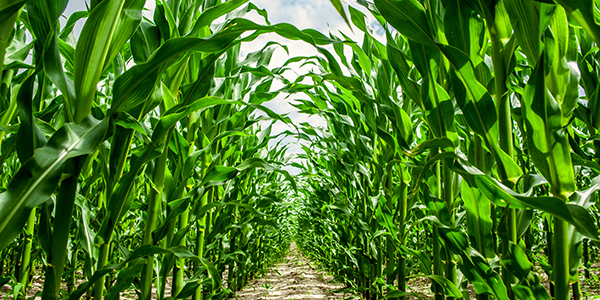AGRONOMICSUPPORT
YOU CAN TAKETO THE FIELD
Early Steps Can Pave the Way for a Big Corn Crop
Mother Nature has a major impact on the corn crop in its early vegetative growth stages, but there are still steps farmers can take to boost plant health and yield potential during that time, says Dan Mitchell, an LG Seeds agronomist in the Mid-South and Delta.
Tip #1: Don’t skip side-dressing
Nitrogen is one of the most critical nutrients for corn throughout the growing season. “You can’t afford to skip side-dressing,” says Mitchell.
Nitrogen works best if it’s applied when the plant needs it most. When it comes to side-dressing, that’s in the V6 to V8 stages when rapid nutrient uptake begins. “Timing nutrient applications to match this uptake enhances the potential for greater nutrient use efficiency, particularly for mobile nutrients such as nitrogen,” notes Kansas State University Research and Extension.
“Put down part of it with the crop to get it up and running and put on the rest later to enhance the overall use of that nitrogen,” Mitchell advises. “Farmers can get by with less nitrogen by split applying rather than trying to put it all up front and hoping the weather cooperates,” he continues.
Tip #2: Biologics, starter fertilizers, micronutrients are worth a look
Farmers are also increasingly interested in products like biologicals to improve crop potential and soil health or starter fertilizers to give corn plants an early boost. The latter is particularly important for fields in a conservation tillage program.
With technology advancing, many biologicals are now backed by sound research and results. “Some of the newer companies claim their products can reduce total fertilizer usage by 25% to 50% by enabling the plant to use it more efficiently,” Mitchell says.
Many starter fertilizers provide return on investment (ROI), if not in the traditional sense of adding yield, he says. “Starter fertilizers make a more efficient and more stress-fighting plant and they reduce the amount of time in the field so the dry down is a little better at harvest time.” Mitchell explains.
But with so many products on the market, deciphering which are worthwhile can be difficult. Mitchell says, “I encourage farmers to make sure there’s science behind it. Start small, test it on some acres, but don’t get carried away with a new product until you’ve proven to yourself there is a ROI. And then if there is, expand it to more or all of your acres.”
“There could be several combinations that could work in conjunction with one another,” Mitchell adds.
An increasing number of farmers in Mitchell’s area are adding nutrients like sulfur, zinc, manganese and even some copper to starter programs or down the road. The goal is more complete feeding of the plant to get it through the V6 to V8 stage, when it has a more ample root system and is a bit more sufficient on its own.
Sulfur in particular is a “very, very important” micronutrient for growers in Mitchell’s mid-South/Delta region. It is probably the No. 4 most often applied nutrient behind N, P and K, he says.
Tip #3: Control weeds and disease
Start clean and stay clean should be the motto when it comes to herbicide programs, according to Mitchell, who says heavy weed growth and especially grassy weeds can really sap plants.
“Getting out there in a timely fashion, applying the correct herbicides for your situation, and, most importantly, using a combination of modes of action to spread out your control gives you the best chance down the road,” Mitchell says.
He also emphasizes the importance of being ready to apply fungicide – both in terms of product and equipment. “With our major diseases like tar spot, northern corn leaf blight, gray leaf spot and southern corn rust, we can make a big impact on these diseases and increase yield substantially with timely applications,” he says.
Fungicides have also improved notably over the past decade, he points out, with many now using three different modes of action to protect against a variety of diseases.
Tip #4: Planter prep is essential
Mitchell’s final piece of advice is to take care of the most important piece of equipment on your farm – the planter. “If farmers don’t get the seed in the ground at the correct depth and spacing, they’ll be up against it all the season,” he says.
“Make sure your planters are calibrated, set up right and maintained,” he recommends. “Failure to do so can cost you 10 to 15 bushels an acre,” Mitchell adds. Check out our planter maintenance checklist.
Would you like more tips on building yield? LG Seeds prides itself on having a lot of knowledgeable and connected boots on the ground for superb customer service and sound recommendations. Contact your local LG Seeds agronomist today.






Agronomy Team